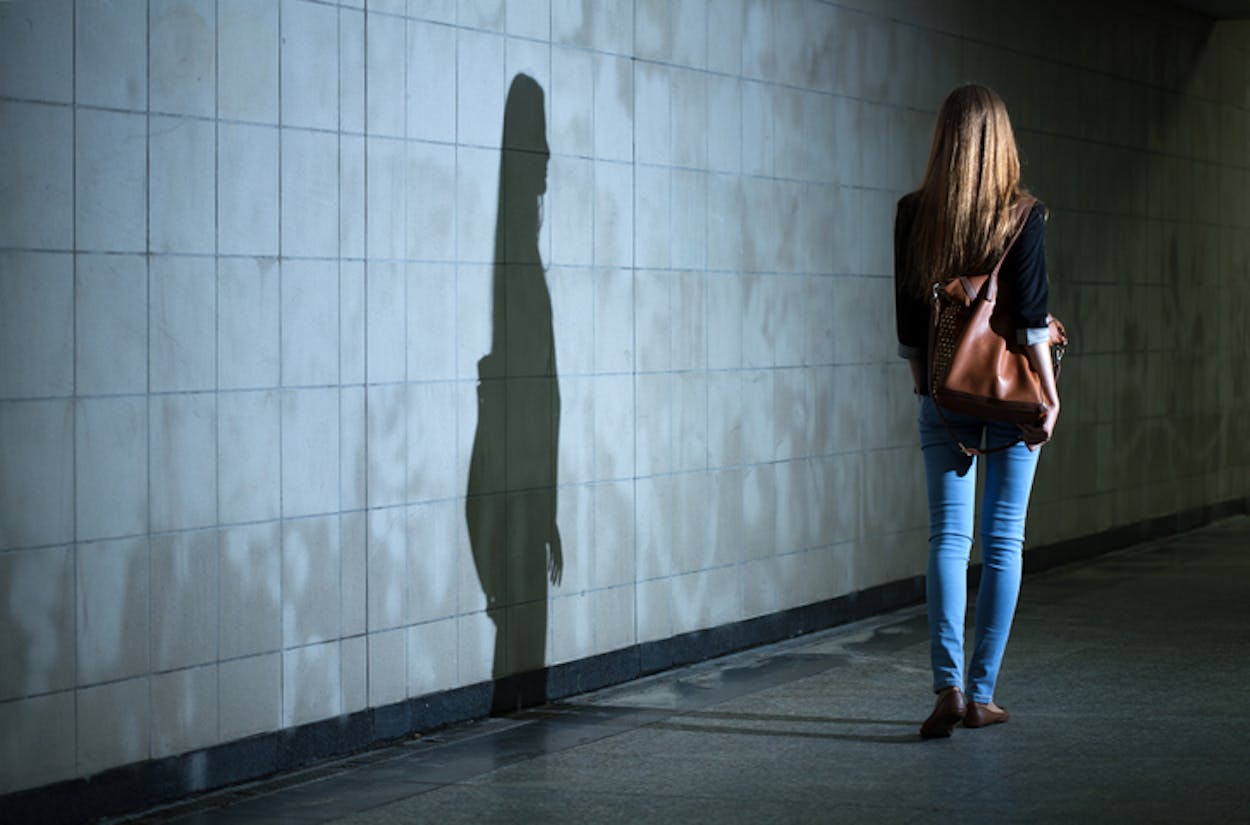Going for a walk. Almost no activity sounds more common, yet in my time living in Houston, I’ve found that walking the city’s streets is no ordinary action. In an essay for this publication, I explored how for many women in Houston, there’s a need to think twice before setting out on foot. Dangers abound, from the giant cars and SUVs whizzing by to the unkempt and disappearing sidewalks to the heckling passersby who pose a very real and frightening threat to a woman walking alone.
While these are public spaces, they are also domains inhabited freely—and with little consequence—by men. In contrast, a woman exploring them can often experience something remarkably different. It’s a strange manifestation of gender inequality. To that end, on Thursday, the think tank Houston Tomorrow will embark on a women’s “exploratory walk” to raise awareness about the challenges faced by women in cities.
The walk is being organized by Womenability, a French collective working to promote gender equality in cities across the world, and 25 cities in 20 countries will participate. Houston is one of three U.S. cities (Baltimore and New Haven being the other two), and the walks in this country have been dedicated to Jane Jacobs, a revered voice in urban design, to commemorate what would have been her 100th birthday.
So, why Houston, apart from the obvious mobility issues and car culture? “We wanted to look at cities with over 100,000 inhabitants, and with a woman as the head,” said Audrey Noeltner, co-founder of Womenability, noting that when the collective chose the city, Anise Parker was still mayor of Houston.
An ancillary but crucial goal of the walk is also to get women involved in local governance and policy-making, arenas that have largely been a stronghold of men. Jay Blazek Crossley, executive director of Houston Tomorrow feels that if decisions and policies are made by a single gender, not everyone’s concerns will be reflected. “In total of the 56 people serving on the Transportation Policy Council and deciding at least $2.5 billion in transportation funding allocations for the Houston region, eight or 14 percent are women. Only seven percent comprise the voting members,” Crossley said. That number becomes especially significant when one considers that the city averages 100.4 men per 100 women.
Yet not every part of Houston enjoys such an even ratio; U.S. Census data shows that for every 100 women living downtown, there are 298 men. When you couple a situation where men outnumber women with pitiable public transportation and a lack of public amenities (toilets, street furniture, and sufficient street lighting), threats—real or imagined—are further exacerbated for women who walk the streets as a means of transportation.
And not only do women feel hesitant to walk, they also think twice before hopping on a bike. According to the 2009 National Household Travel Survey, only 24 percent of all bicycle trips in the U.S. are made by women. In northern Europe there are no significant differences in cycling rates among income classes or sexes: 55 percent of riders in the Netherlands are women and 49 percent of bike trips in Germany are made by women.
“We have to ask ourselves what elements can improve safety and the perception of it, and make women feel invited to share public space in Houston,” said Caitlin McNeely, program manager at Houston Tomorrow. “We need to examine a diversity of needs and structural inequities that we may not always realize exist and make women feel that their concerns are taken into account so as to overcome perceptions of safety that often keep women and families away from certain places” she added.
And so, while designing the route, Houston Tomorrow has highlighted elements that showcase the challenges of being a woman accessing public places in Houston, be it on foot, bikes or by exploring transit options. On the route, there will also be a few good examples of what Houston has achieved in terms of creating amenable urban settings. The 3.5-mile trail will illustrate the various experiences a woman might experience, from walking through some of the more central, commercial areas of town to traveling through residential neighborhoods and a big park. At the end, the group will take the lightrail back to the starting point to explore how public transportation plays a big role in the gender equation.
During the walk—which aims to spark a discussion on what can be improved in Houston— women will be asked to pause and share their experiences as walkers in the city. A charter of demands will then be created to serve as a template to move ahead in the journey to make Houston a friendlier place for women pedestrians, commuters and cyclists.
If you want to join the walk, direct your questions to Caitlin McNeely at [email-hidden]. The tour is from 6:30 to 8:30 p.m. It begins and ends at Weights and Measures, 2808 Caroline Street. Men are, of course, welcome.






